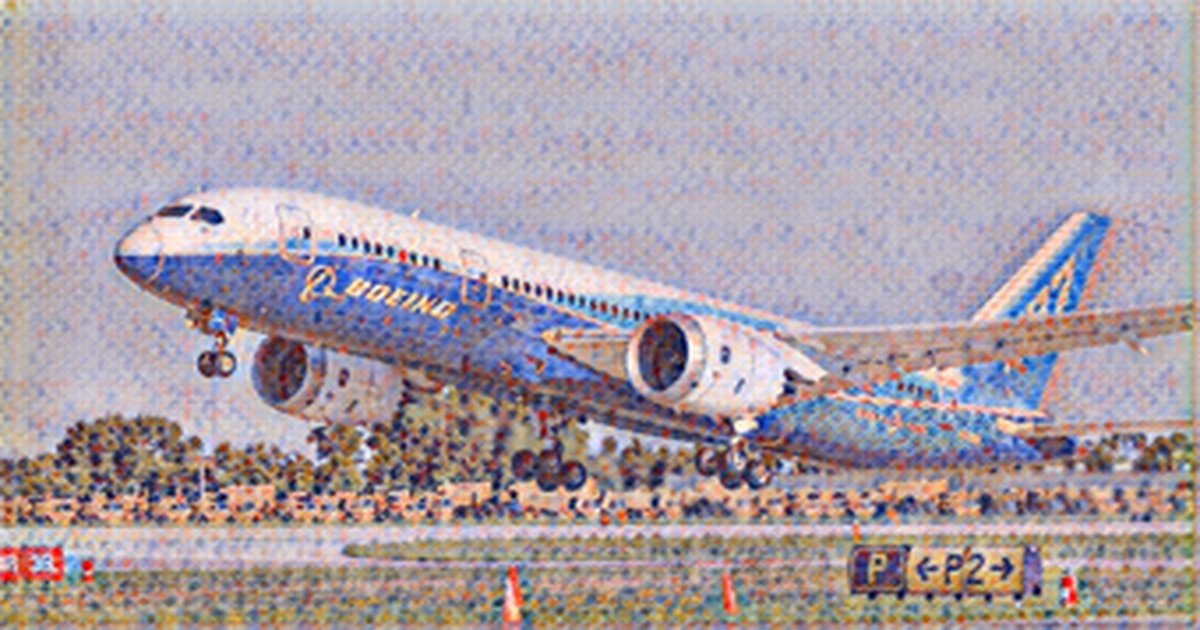
The Federal Aviation Administration has issued a new airworthiness directive to Boeing 787 operators ahead of Verizon and AT&T's roll out of 5 G service in the C-band spectrum on January 19.
The agency said that operators must take additional precautions when landing on wet or snowy runways at airports where 5 G C-band service is deployed. There will be a total of 137 aircraft in the US and 1,010 worldwide affected by the order.
The Federal Communications Commission granted C-band licenses to the telecommunications giants last year after Verizon and AT&T bid for $45.45 billion and $23.41 billion in an auction to boost their existing 5 G networks.
Last month, executives from Boeing and Airbus wrote a letter to Transportation Secretary Pete Buttigieg, calling for the 5 G rollout to be postponed.
The letter warned that the move could potentially interfere with radio altimeters on aircraft, which provide critical altitude information for pilots when operating in low visibility environments. According to an economic analysis from Airlines for America, the rollout could result in delays, cancellations, and cancellations for 345,000 passenger flights, 32 million passengers and 5,400 cargo flights, $2.1 billion in annual operating costs for U.S. airlines and A 4 A cargo operators, and $1.59 billion in lost wages and productivity annually for passengers and shippers.
After already delaying the rollout to Jan. 5, Verizon and AT&T agreed to a two-week delay requested by the Department of Transportation in order to give the FAA more time to study 5 G's potential impact on radio altimeters. Wireless industry trade group CTIA, the Aerospace Industries Association, and Airlines for America agreed to share data in order to help the FAA and the FCC address the concerns.
A spokesman for the FAA told FOX Business on Friday that 5 G interference with the aircraft's radio altimeter could prevent an aircraft from stopping on the runway during the two-week delay in deploying new 5 G service, but safety experts determined that 5 G interference could prevent the aircraft's radio altimeter from transitioning to landing mode, which could prevent an aircraft from stopping on the runway. The Airworthiness Directive requires crews to be aware of this risk and to follow specific safety procedures when landing on these runways. A Boeing spokesman told FOX Business it is working closely with airlines, radio altimeter suppliers, the telecommunication industry and regulators to make sure every commercial airplane model can safely and confidently operate when 5 G is implemented in the United States. The FAA continues to coordinate with Boeing to address possible 5 G C-band interference risks to other aircraft models.
The FAA has issued a list of 50 airports identified as having the greatest impact on the U.S. aviation sector, which will be subject to C-band exclusion zones for at least six months.
AT&T and Verizon will provide data on base stations, operating characteristics, and planned deployment locations, and will continue to work in good faith with the aviation stakeholders to support the technical assessment of individual altimeters and airport environments under the terms of an agreement with the FAA. After July 5th, AT&T and Verizon will be able to use their C-band spectrum licenses without any additional restrictions due to their C-band spectrum licenses.
